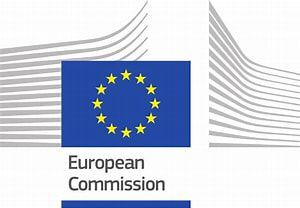 Homepage CASE
Homepage CASE
Selected values

-
Date:
20 Dec 2023 - 20 Dec 2024
-
Client:

-
Project duration:
20.12.2023 - 20.12.2024
-
Leader:
CASE– Center for Social and Economic Research
-

Adam Śmietanka
Economist
Adam Śmietanka is an Economist at CASE. His areas of expertise include data analysis, data visualization, web scraping, and inflation measurement. At CASE, Mr. Śmietanka is responsible for conducting data analysis, economic research, and developing and maintaining CASE’s online monthly consumer price index. His professional experience includes an internship with PwC’s Advisory Team and a … <a href="https://case.dev10.pro/project/vat-gap-in-the-eu-3/">Continued</a>
Projects from this author:
-
The challenges of VAT beyond VAT in the Digital Age
This study should consider possible improvements to the EU VAT system and assess their feasibility and likely consequences, based on the analysis of its current weaknesses, gaps, inefficiencies. As requested by the ToR, this requires a forward-looking analysis and prospective reflection, combined with and based on the retrospective assessment of the current situation. The study requires, on the one side, a thorough re-assessment of well-known problems of the EU VAT systems, which have been discussed for years by policymakers, scholars and in courts and tribunals, the solutions to which have already been long proposed in the academic as well as policy arena. On the other side, it requires a fresh view to identify new solutions to old problems, new problems and their possible solutions, as well as potential unknown problems, i.e. those that may appear in the future given the current economic, political and legal evolution and the megatrends of the EU and global society. Operationally, the activities needed to achieve the objectives of the study are straightforward. For each of the areas or angle of analysis, the study team will have to: Identify existing weaknesses and challenges of the EU VAT system, including those that may appear in the future given the likely evolution of the current situation. Design solutions to the problems identified. Assess the feasibility and consequences of the solutions identified.
-
VAT compliance gap due to Missing trader intra-community (MTIC) fraud
Revenues generated by Value-Added Tax (VAT) play an important role in the budgets of European Union (EU) Member States (MS) and the EU; as VAT resource accounts for around 10% of EU own resource revenue and around 26% of MS’s tax revenue. Tax fraud, evasion and avoidance reduce these revenues, and undermine the tax system, affecting … Continued
-
Personal income tax (including Social Security Contributions) gap
Personal Income Tax (PIT) and social security contributions (SSC) are the core source of government revenue in all EU Member States. In 2020, PIT and SSC contributions across Member States ranged from 49 to 75 percent and accounted in total for approximately 67 percent of total receipts from taxes and social contributions in the … Continued
-
The challenges of VAT beyond VAT in the Digital Age
The core objective of this study is to inform in an accurate, timely, understandable, and attractive manner the national administrations, Commission, academic community, and a broader audience on the value, development over time, and difference across Member States of tax gaps and related parameters. More specifically, the study will cover the VAT compliance gap, VAT policy gap, its components, and the C-efficiency. The expected secondary objectives are, among others, to enhance the efforts of national administrations in their own calculation by helping to validate their estimates and by providing quantitative evidence to help assess the effectiveness of the measures introduced
at the EU level and by Member States’ administrations.
The set of tasks, components of the analysis, and elements of the presentation envisaged for the 2023 Study:
- Structured data collection
- Review of the economic and policy context in 2022 and outlook for 2023, which covers
- Calculation of VAT compliance gap estimates by EU Member State as well as at EU level
- Calculation of VAT policy gap estimates and collection efficiency by EU Member State as well as at EU level
- Individual country reports
- Case studies
- Review, assessment, and refinement of the methodological approach developed in the previous edition of the VAT gap study
- Web front end for visualization and dissemination
Project Leader: CASE – Center for Social and Economic Research
Project Partner: Oxford Economics
Client: Directorate-General Taxation and Customs Union (DG TAXUD)
Related projects
Thanks for joining us!
You're now part of a community that values [your newsletter's focus]. Get ready to stay informed, inspired, and engaged with our carefully curated content.
